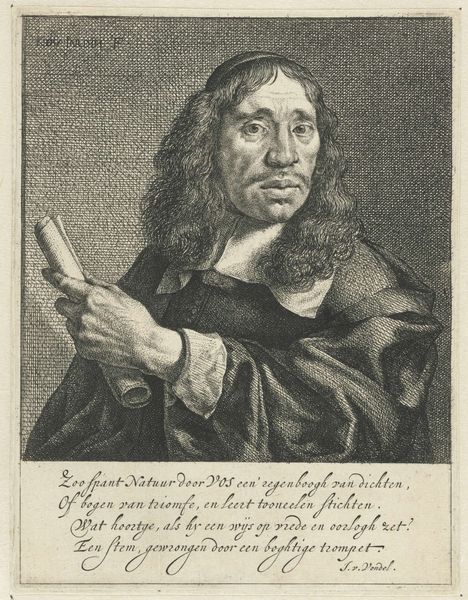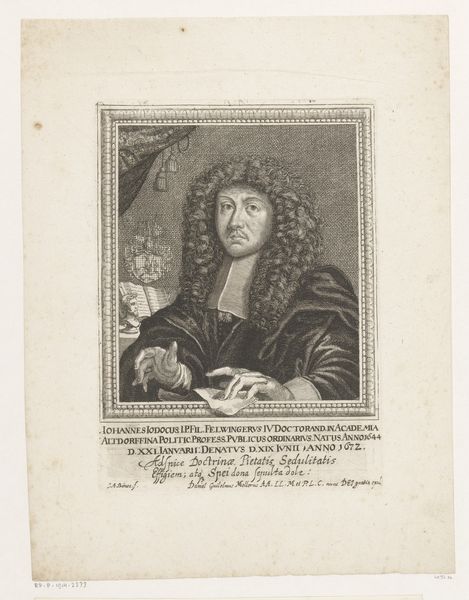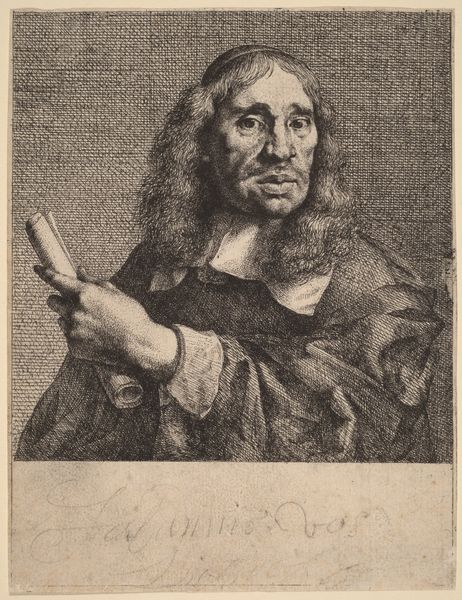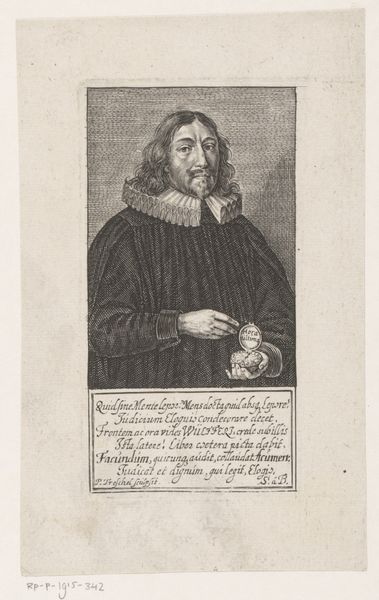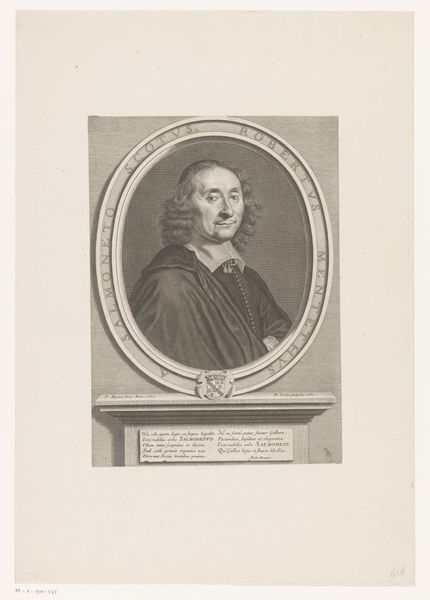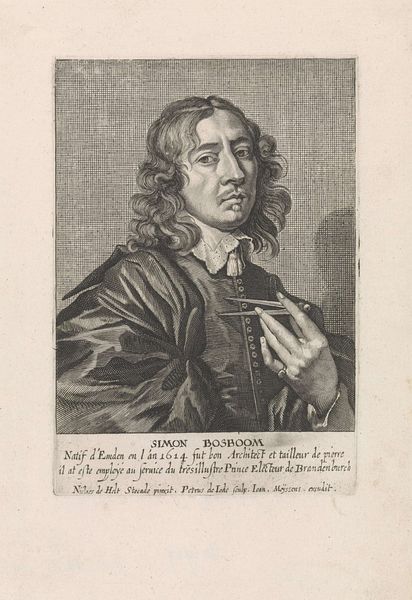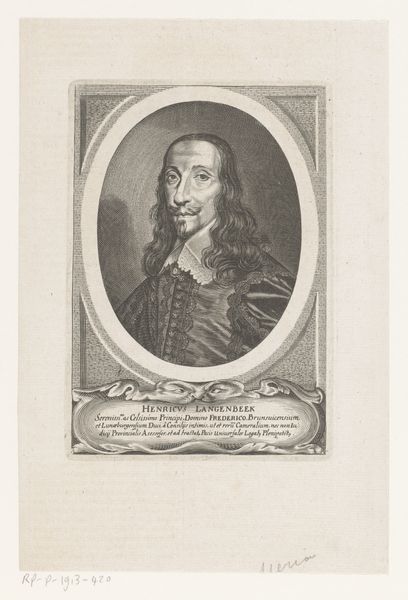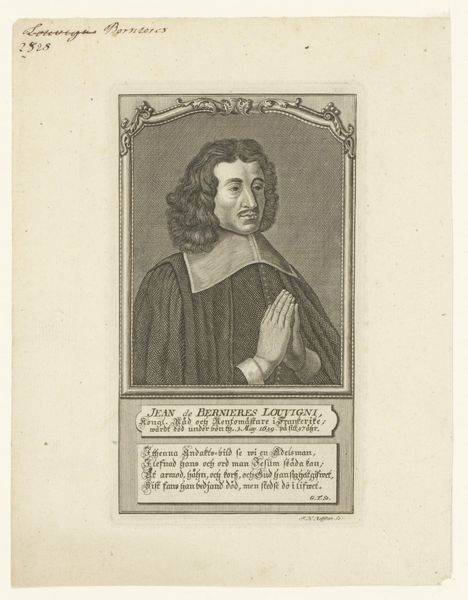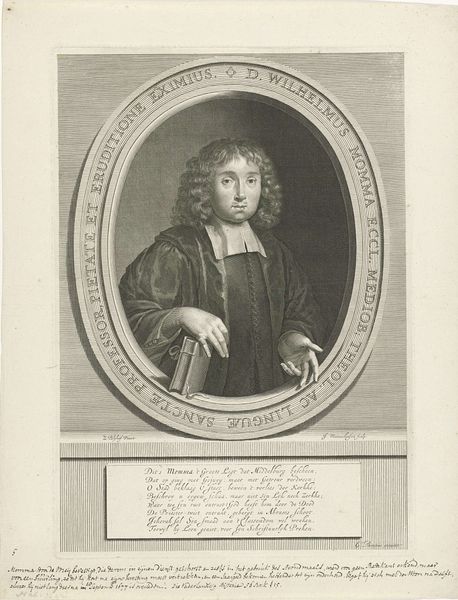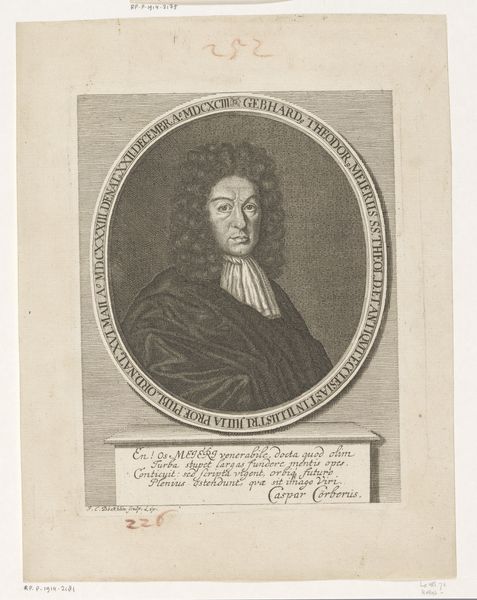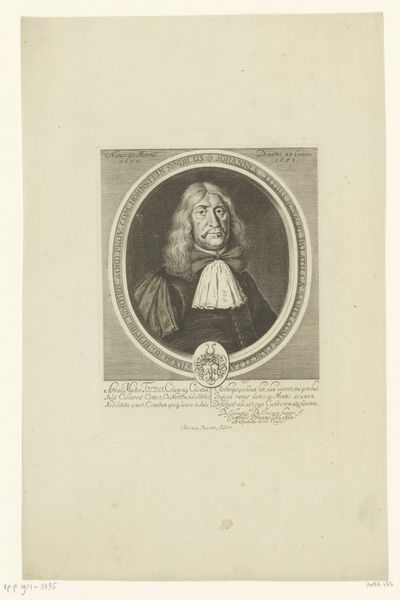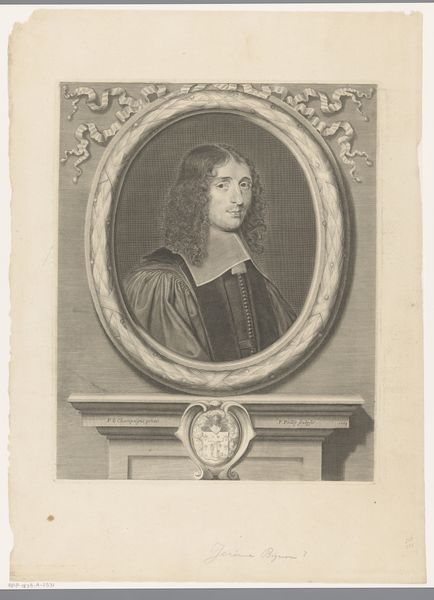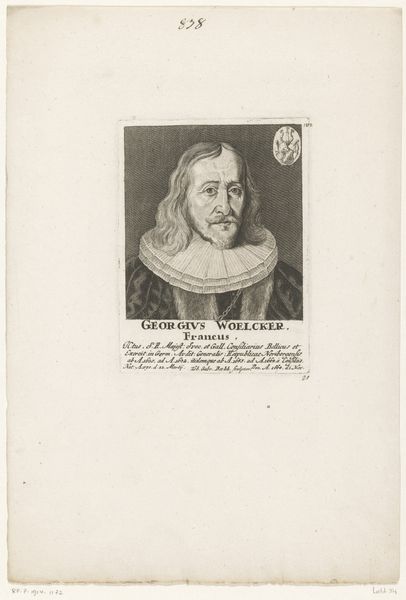
drawing, print, engraving
#
portrait
#
drawing
#
baroque
#
dutch-golden-age
# print
#
history-painting
#
engraving
#
realism
#
calligraphy
Dimensions: height 186 mm, width 147 mm
Copyright: Rijks Museum: Open Domain
Editor: Here we have Andries van Buysen the Elder’s 1726 print, "Portrait of the Poet Jan Vos," housed at the Rijksmuseum. I am immediately struck by how somber the man looks, despite holding what appears to be a scroll, maybe representing his poetic achievements. What does this engraving tell us about its time? Curator: Well, the soberness you noticed reflects a shift in the public role of artists and writers during the Dutch Golden Age. The text inscribed below the portrait praises Vos’s natural talent to inspire wonder and direct action in times of war and peace, yet his face suggests something else entirely. Van Buysen seems to be playing with the contrast between the image and the social expectation. Does the portrait itself live up to that praise in your eyes? Editor: That’s interesting. I wouldn't say that it inspires *wonder*, necessarily. Maybe the point is to show him as an introspective intellectual, which might have been considered worthy of respect at the time? Curator: Exactly. The choice to portray him with a hint of melancholy aligns with a changing perception of artists. Consider who controlled artistic production: wealthy merchants, the Church, sometimes the artists themselves through workshop practices and sale. How might that have shaped this kind of image? Editor: So the emerging middle class maybe wanted to be taken seriously as patrons of intellectual work? They wanted portraits to be more about serious thought than just ostentatious display of wealth? Curator: Precisely! Patronage was changing, and so was the role of the artist and poet within Dutch society. This engraving acts almost like propaganda in shifting the perception of the cultural elite in Amsterdam society. Editor: This piece seems far more nuanced now, thinking about it in terms of the politics of representation rather than just the representation itself. Thanks for opening my eyes to all these contexts. Curator: It works the other way around too: thanks to your sensibility, this analysis provides clues to explore other works and artists in similar sociopolitical contexts.
Comments
No comments
Be the first to comment and join the conversation on the ultimate creative platform.
